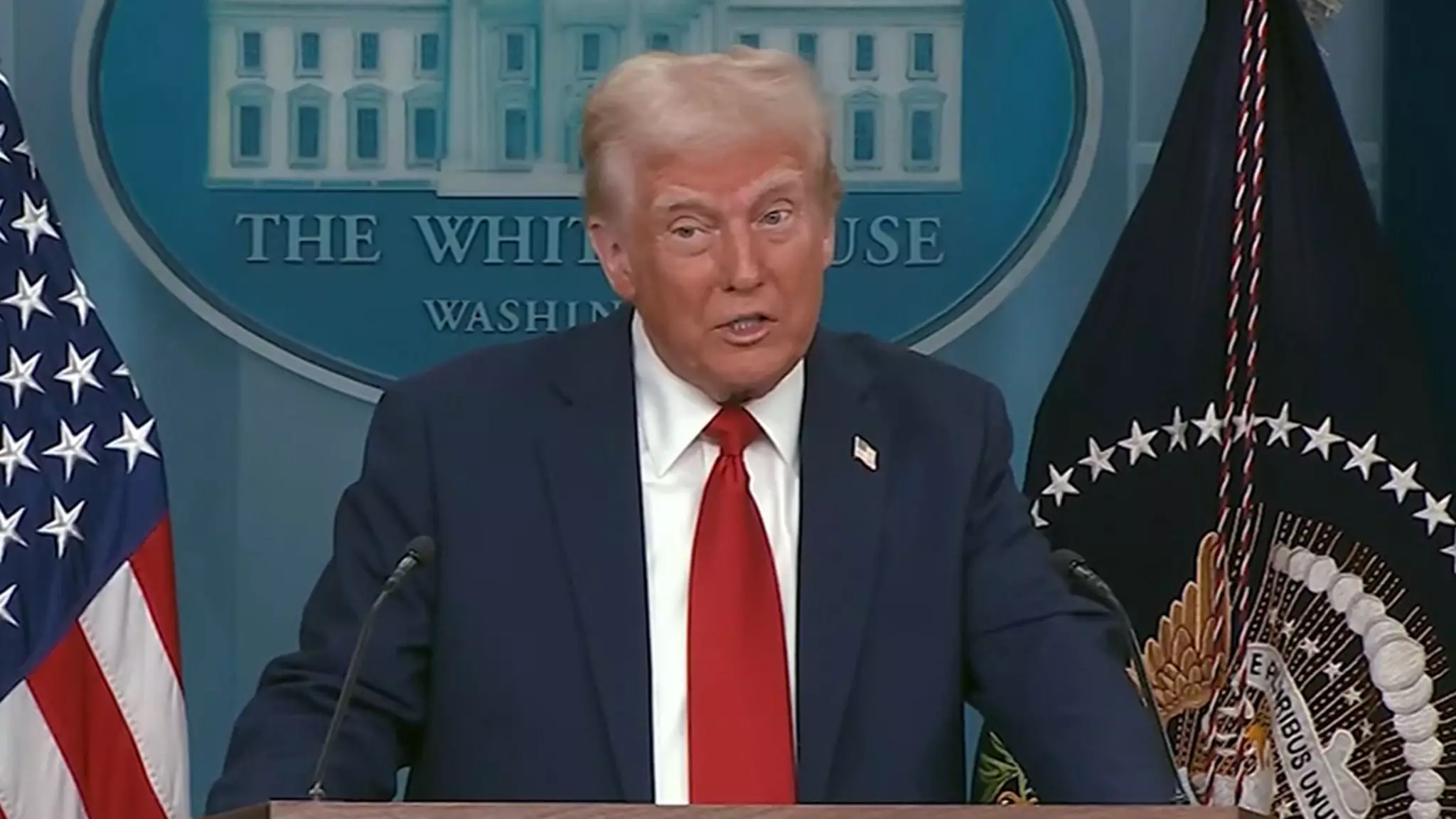On a seemingly ordinary evening over Washington, D.C., a devastating aviation disaster unfolded, claiming 67 lives when an Army helicopter collided with a commercial airliner. In the wake of this tragedy, the political landscape quickly became charged as various figures, most notably former President Donald Trump, seized the opportunity to voice their opinions and assign blame. What ensued was not only a conversation about the incident itself but also a broader discourse on the implications of administrative policies, the role of diversity in hiring, and the responsibilities of leadership in times of crisis.
As is often the case in times of national crisis, the reactions from political figures can reveal underlying tensions and strategies. Trump directed attention toward Transportation Secretary Pete Buttigieg, challenging him publicly during a press conference. In his address, Trump sought to connect the tragedy with the Biden administration’s policies on diversity, equity, and inclusion (DEI), alleging that these hiring practices undermined aviation safety. This claim lacks substantial evidence, especially as investigations into the incident were still in their infancy. The timing of such assertions raises questions about Trump’s motivations: is this genuine concern for public safety, or merely a strategic move to discredit his political adversaries?
In contrast, Buttigieg responded on social media by emphasizing the need for accountability and pressing Trump to take a more constructive stance rather than engaging in blame-shifting. His call for “actual leadership” serves as a reminder that effective governance often requires collaboration and critical thinking during crises, rather than politically motivated accusations.
Trump’s remarks regarding diversity hiring and its supposed contribution to the crash reflect a long-standing debate about DEI initiatives in various sectors, especially in high-stakes environments such as aviation. The assertion that such policies are detrimental to safety is a significant oversimplification. While there is merit in ensuring that all employees meet rigorous standards, the connection drawn between DEI and the specifics of aviation safety lacks nuance. Hiring practices that promote diversity do not inherently compromise qualifications or capabilities; rather, they can enrich organizational cultures and perspectives that have historically been marginalized.
The question remains: why is this narrative about diversity being amplified in the context of a tragic accident? This tactic could serve a dual purpose: distracting the public from more pressing questions about regulatory oversight and accountability in air traffic control and setting a political agenda as the country faces significant challenges across various domains.
While political figures engaged in partisan disputes, the focus on actual investigations into the crash took a backseat. As the details emerged, it became evident that air traffic controllers had issued warnings to the helicopter pilots shortly before the collision, indicating potential lapses in communication or situational awareness rather than issues stemming from DEI policies. Ignoring these critical elements in the search for accountability undermines the very purpose of the investigations, which is to learn from such tragedies to prevent their recurrence.
Moreover, Trump’s quick conclusions about the crash and suggestion that air traffic controllers should be the “best of the best” sidesteps the complex operational realities of aviation and the systems in place designed to protect public safety. Robust safety measures often come from cohesive teamwork and the integration of diverse perspectives, not a singular focus on conformity to a narrow set of criteria.
In the aftermath of the D.C. flight disaster, the intertwining of politics with public safety serves as a poignant reminder of the impact rhetoric can have on public perception and policy. Engaging in blame games not only shifts the focus from accountability to partisanship, but it also threatens to undermine the public’s trust in the institutions designed to ensure their safety. The need for effective communication, transparency, and responsible leadership is more pronounced than ever in the face of such tragedies.
Ultimately, the discourse surrounding the D.C. flight catastrophe illustrates the delicate balance between political accountability and public safety. Leaders must rise above the fray of blame and embrace a unified commitment to improving safety standards and communication protocols, learning from each misstep along the way, rather than leveraging tragedy for political gain. The real challenge lies in fostering an environment where constructive dialogue can flourish, ensuring that future tragedies can be prevented through thoughtful solutions rather than inflammatory rhetoric.

